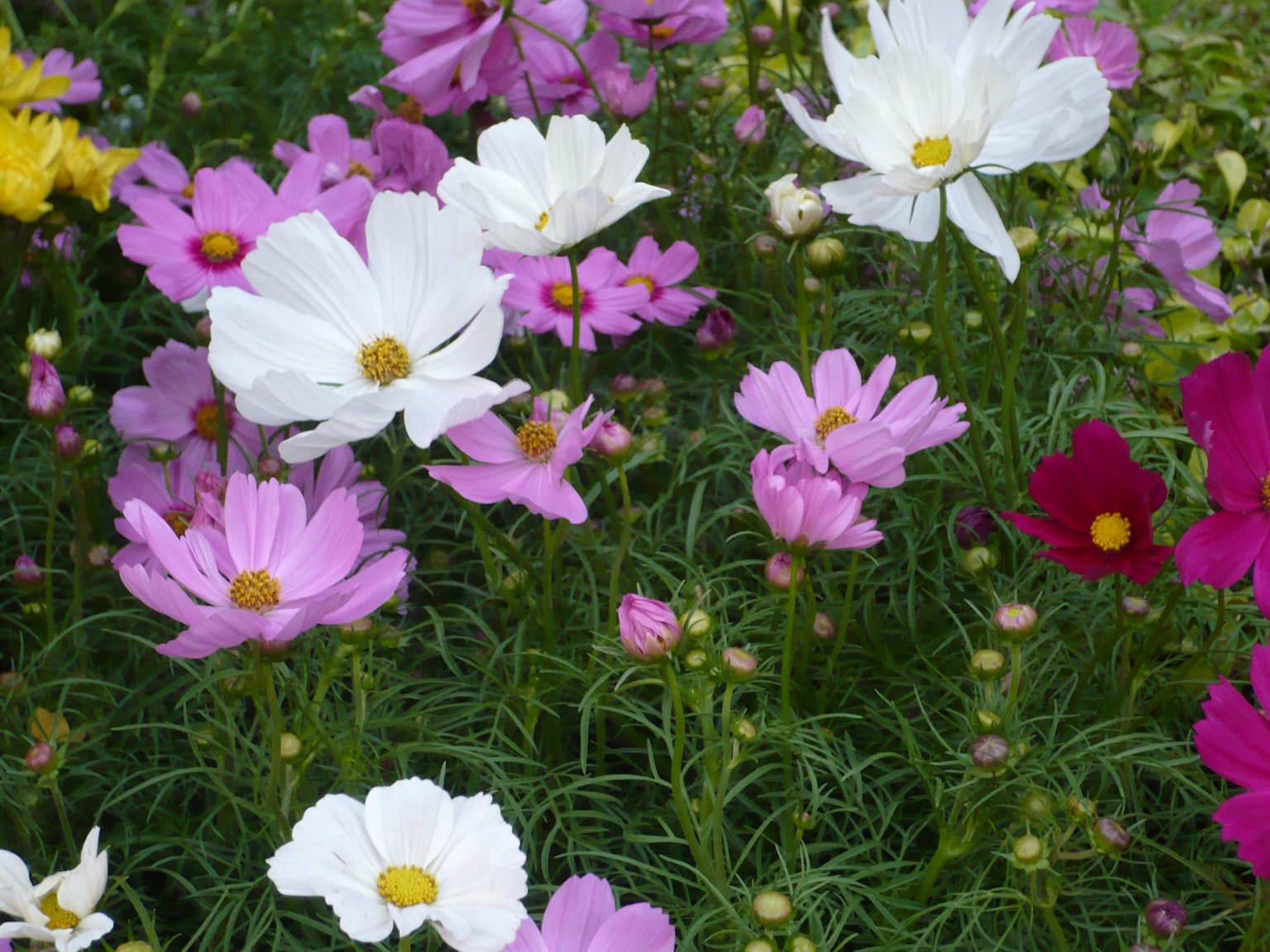Description
Cosmos are sun-loving plants with a long flowering season. These flowers come in different colours of pale pastels and whites through bright pink, crimson, orange, and other colours. They are ideal for flower beds filling the yard with open-faced blooms that can go on for months and months. There are several varieties of cosmos of which the most popular are Cosmos bipinnatus (Garden Cosmos), Cosmos sulphureus (Yellow Garden Cosmos) and Cosmos atrosanguineus (Chocolate Cosmos).
Cosmos is a hardy plant that grows even in poor soil conditions and attracts birds, bees and other pollinators. As such, it’s a great way to support your garden.
Planting requirements
Planting season: Year round
Planting conditions:
| Propagation | Propagate from seeds |
|---|---|
| Planting method | Prepare the seed bed area by removing clumps of soil to achieve a crumbly texture. Sow seeds lightly, spaced about 2-3in (5-8 cm) apart |
| Soil | Prefers well-drained light soil and does not require any special soil preparation |
| Water | Can tolerate dry soil but prefers moist soil |
| Light | Requires full sunshine |
| Fertiliser | Do not fertilize cosmos. Nutrient-rich soil produces plants that are weak-stemmed |
Growing conditions:
| Temperatures | Thrives in climate with temperatures between 20°C to 24°C. At temperatures above 27°C and below 16°C germination is reduced, but will happen nonetheless if taken care of while germinating |
|---|---|
| Soil | Add to add mulch to the garden for moisture retention |
| Water | Water regularly, but do not overwater |
| Pruning | Not Applicable |
| Weed control | Keep the area weed free |
Harvesting
Cut the flowers anytime after blooming when the petals are open.
Curing
Cosmos does not require a curing stage.
Storage
Dry blooms in a well-ventilated area, away from sunlight, or use a food dryer. Naturally dried flowers should take 1 to 5 days. Store in a moisture-tight container in a cool, dark place.
Protecting your plants
Pest control
Pest type:
- Aphids
- Leafhoppers
- Borers
- Snails and Slugs
Symptoms:
- Aphids: Distorted growth, yellowing of leaves, sticky residue (honeydew) on leaves.
- Leafhoppers: Stunted growth, yellowing leaves, and potential transmission of aster yellows.
- Borers: Broken stems, visible holes in stems, overall plant weakness.
- Snails and Slugs: Irregular holes in leaves and a slimy trail on surfaces.
Control method:
- Aphids: Introduce natural predators like ladybugs, use insecticidal soap, or neem oil.
- Leafhoppers: Use insecticidal sprays or introduce beneficial insects to control populations.
- Borers: Early treatment with insecticides; remove and destroy infested plants.
- Snails and Slugs: Hand-picking, using barriers like copper tape, or applying slug bait.
Disease Control
Disease type:
- Bacterial Wilt
- Canker Disease
- Powdery Mildew
- Aster Yellows
- Fusarium Wilt
- Botrytis Blight
Symptoms:
- Bacterial Wilt: Sudden wilting of stems and leaves, often starting at the base.
- Canker Disease: Dark brown scabs on flower stems; upper growth may die off.
- Powdery Mildew: White spots on leaves, leaf distortion, yellowing.
- Aster Yellows: Yellow-green leaves, stunted growth, distorted flowers.
- Fusarium Wilt: Wilting and discoloration of stems and foliage; plant death.
- Botrytis Blight: Papery brown flowers with grayish mold.
Management:
- Bacterial Wilt: Remove and dispose of infected plants; practice crop rotation.
- Canker Disease: Remove infected plants immediately; avoid overhead watering.
- Powdery Mildew: Apply fungicides; improve air circulation around plants.
- Aster Yellows: Eradicate infected plants; control leafhopper populations.
- Fusarium Wilt: Remove infected plants; avoid planting cosmos in previously infected soil.
- Botrytis Blight: Improve air circulation; apply fungicides if necessary.
Sources
In addition to our General List of Sources (link), we used these specific references:
